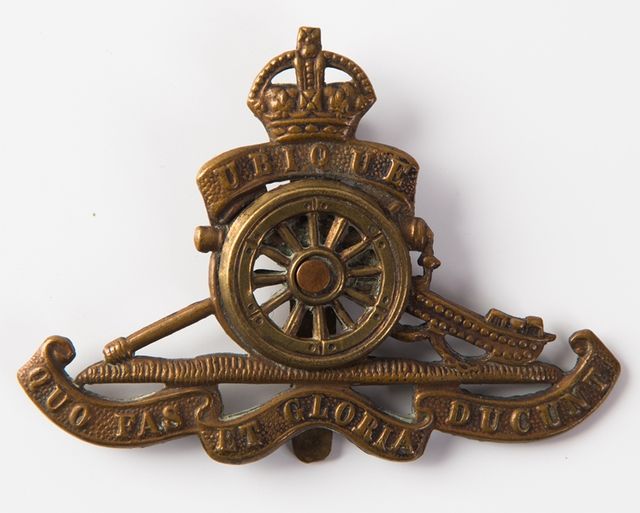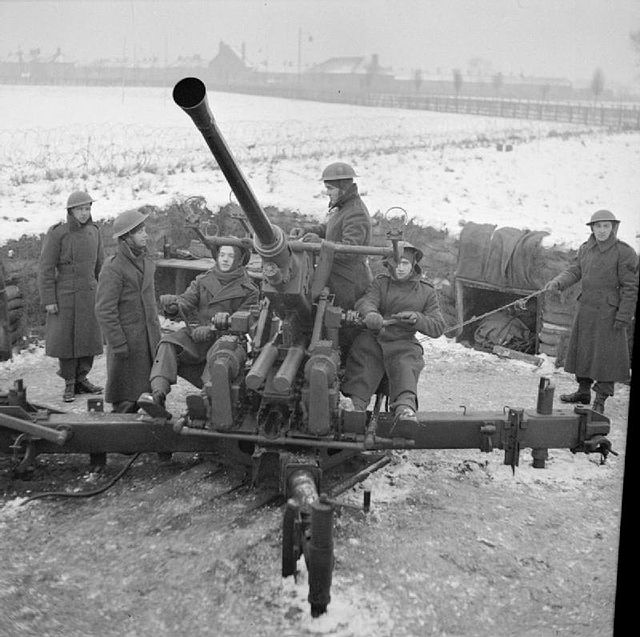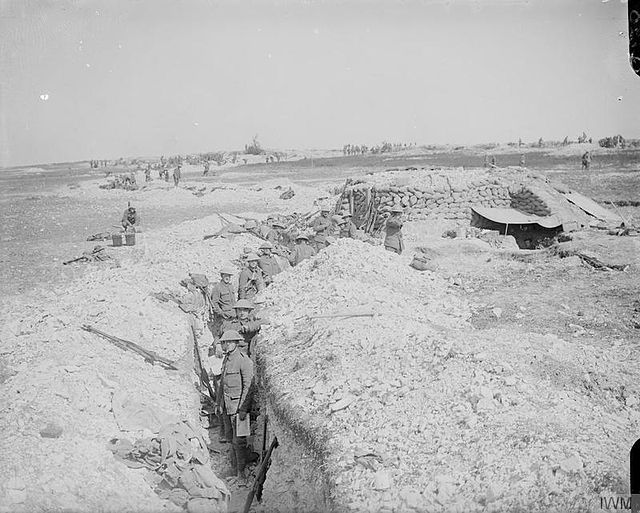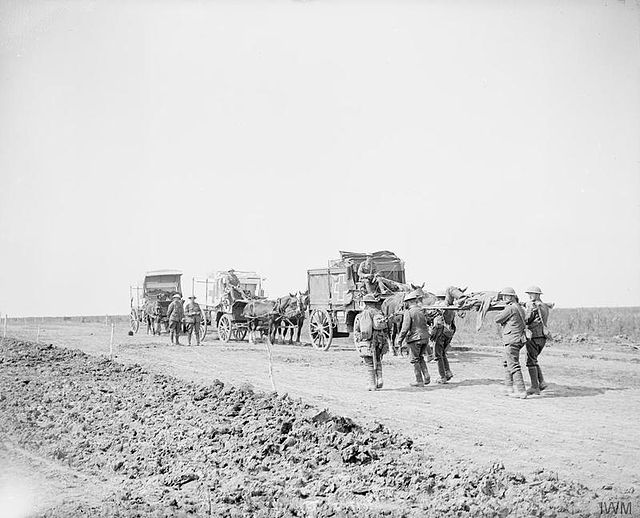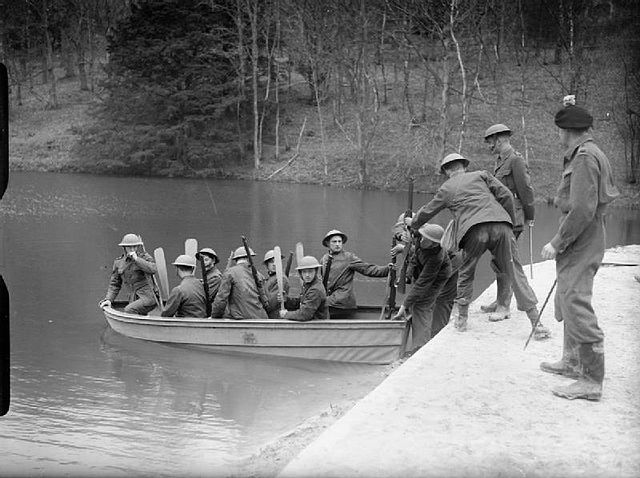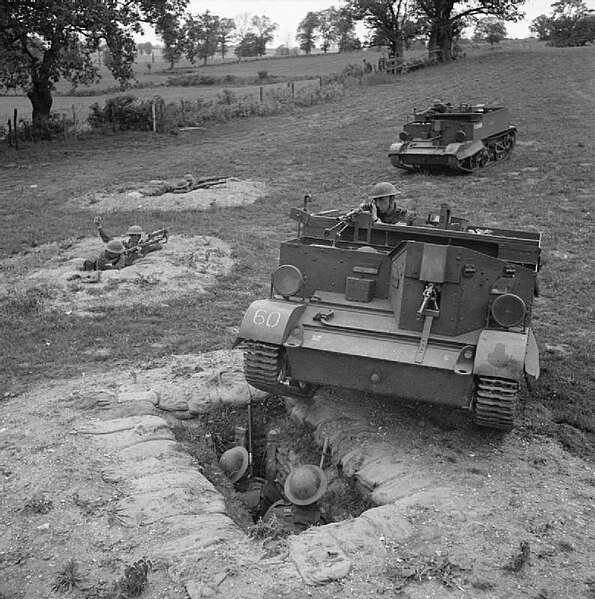100th Light Anti-Aircraft Regiment, Royal Artillery
The 100th Light Anti-Aircraft Regiment, Royal Artillery, was an air defence unit of the British Army during World War II. Initially raised as an infantry battalion of the Royal Fusiliers in 1940, it transferred to the Royal Artillery in 1941. It served with 56th (London) Infantry Division in the final stages of the Tunisian Campaign, in the landings at Salerno and subsequent fighting in Italy, including the Battle of Anzio, until it was disbanded at the beginning of 1945.
Cap badge of the Royal Artillery
A Bofors 40 mm LAA gun crew under training, January 1942.
Bofors gun and crew near Tunis, May 1943.
Self-propelled (SP) Bofors gun in Italy, January 1944.
56th (London) Infantry Division
The 56th (London) Infantry Division was a Territorial Army infantry division of the British Army, which served under several different titles and designations. The division served in the trenches of the Western Front during the First World War. Demobilised after the war, the division was reformed in 1920 and saw active service again in the Second World War in Tunisia and Italy. The division was again disbanded in 1946 and reformed first as an armoured formation and then as an infantry division before final disbandment in 1961.
Troops of the 1/5th Battalion, London Regiment (London Rifle Brigade), in a reserve trench in Chimpanzee Valley between Hardecourt and Guillemont, 6 September 1916.
Horse ambulances of the 2/1st London Field Ambulance, Royal Army Medical Corps of the 56th Division on a track running east of Maricourt-Montauban Road, with wounded on stretchers just arriving, September 1916.
Men of the 1st Battalion, London Irish Rifles training in boat handling on a lake in Pippington Park, East Grinstead, April 1940.
Universal carriers 'attack' men of the 10th Battalion, Royal Berkshire Regiment defending from slit trenches during training near Sudbury, Suffolk, 10 June 1942.

